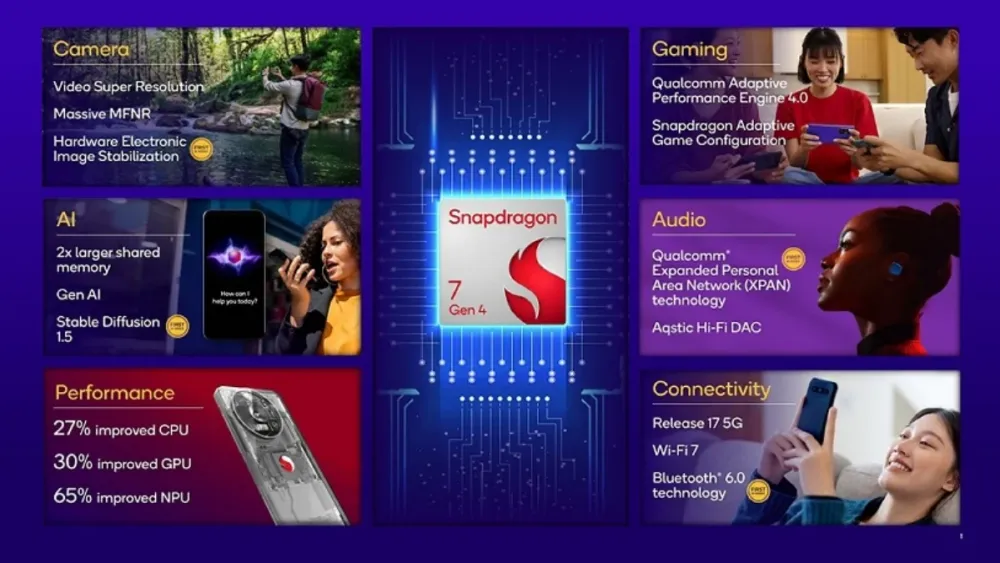
Ahead of the commencement of Computex 2025, Qualcomm unveiled its new Snapdragon 7 Gen 4 processor, positioned in the upper mid-range segment. This latest chip boasts a 65% enhancement in AI computing performance, enabling a broader range of smartphones to natively run generative AI services directly on the device.
The first wave of devices powered by this processor will come from Honor, vivo, and realme, with related products expected to debut by the end of May this year.
Fabricated using a 4nm process, the Snapdragon 7 Gen 4 features a Kryo CPU architecture arranged in a “1+4+3” core configuration. This includes a Prime Core clocked at 2.8GHz, four performance cores running at 2.4GHz, and three efficiency cores operating at 1.84GHz. It also integrates an Adreno GPU tailored for Elite Gaming experiences.
Compared to its predecessor, Qualcomm claims the Snapdragon 7 Gen 4 delivers a 27% increase in CPU performance, a 30% boost in GPU capabilities, and a remarkable 65% improvement in NPU efficiency. It is capable of generating images via Stable Diffusion 1.5 within mere seconds.
In terms of connectivity, the Snapdragon 7 Gen 4 supports WQHD+ resolution displays with refresh rates up to 144Hz, USB 3.1 ports, and 5G standards compliant with 3GPP Release 17, offering peak download speeds of up to 4.2Gbps. The integrated FastConnect mobile connectivity platform brings support for Wi-Fi 7 and Bluetooth 6.0, including Bluetooth Channel Sounding for location-aware devices and XPAN technology to extend wireless audio range and transmission speed via Wi-Fi and Bluetooth.
For imaging, the platform incorporates a triple 12-bit Spectra ISP system. It supports single-camera setups with sensors up to 200 megapixels and enables zero shutter lag for images up to 64 megapixels. In dual-camera configurations, it supports zero-lag photography with 32MP + 21MP combinations. For triple-camera arrays, it enables zero shutter lag with three 21MP sensors. Video recording capabilities include support for up to 4K at 30fps or 1080p at 120fps.


